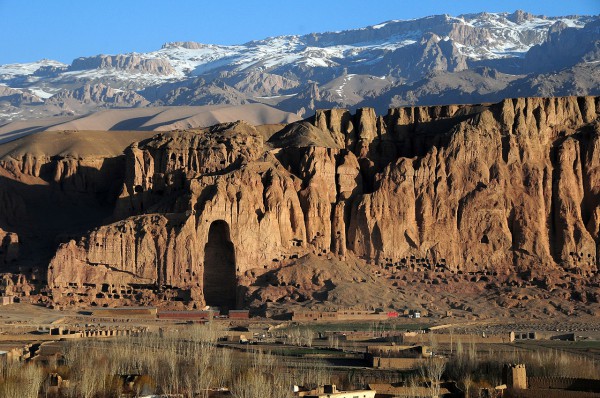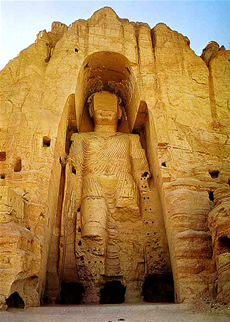 |
| Bamiyan Valley |
The modern-day Bamiyan Valley was part of ancient Indian culture. It is one of the 34 provinces of modernday Afghanistan and lies in the geographic center of the country. Its capital city is also called Bamiyan. Bamiyan became one of the largest cities along the Silk Road.
Before the rise of Islam in the seventh century c.e., central Afghanistan thrived from the Silk Road merchants who passed through the valley on their way to trade with the Roman Empire, China, and India. The Bamiyan Valley provided an important passageway for caravans and merchants attempting to cross the Hindu Kush mountain range.
Xuan Zang (Hsuan Tsang), a Chinese monk traveling through the valley in 634 c.e., reported that it contained a large population and was a center of Buddhist thought and theology. He described specifically the events and rituals he witnessed there.
As a result Bamiyan city became the center of a melting pot of cultures and religious influences. In Bamiyan elements of Greek, Persian, and Buddhist cultural influences merged into a new expression known as Greco-Buddhist art.
Buddhism spread outside India along the Silk Road to Bamiyan city where it thrived in the fourth and fifth centuries c.e. A Buddhist monastery was founded, along with many sculptures and carvings including several giant Buddha statues carved along the cliffs overlooking Bamiyan Valley.
 |
| budha of bamiyan |
From the second century c.e. until the introduction of Islam, a period of approximately five centuries, Bamiyan Valley was a western Buddhist cultural center. Islam overtook the region and dominated the valley for hundreds of years, but the statues remained until March 2001 when the Taliban in Afghanistan destroyed them with explosives.
Historians marveled at their enormous size, some more than 180 feet in height, which were probably the largest representations of Buddha in the world at the time of their creation.
Bamiyan Valley was the most far-flung colony of Buddhism that took root in India with a substantially large following. The artistic and architectural remains of Bamiyan Valley and its importance as a Buddhist center on the Silk Road, are outstanding representations of the complex combination of Indian, Hellenistic, Roman, and Sassanian ancient cultural influences.
